Pharmacological interventions for borderline personality disorder
- PMID: 20556762
- PMCID: PMC4169794
- DOI: 10.1002/14651858.CD005653.pub2
Pharmacological interventions for borderline personality disorder
Abstract
Background: Drugs are widely used in borderline personality disorder (BPD) treatment, chosen because of properties known from other psychiatric disorders ("off-label use"), mostly targeting affective or impulsive symptom clusters.
Objectives: To assess the effects of drug treatment in BPD patients.
Search strategy: We searched bibliographic databases according to the Cochrane Developmental, Psychosocial and Learning Problems Group strategy up to September 2009, reference lists of articles, and contacted researchers in the field.
Selection criteria: Randomised studies comparing drug versus placebo, or drug versus drug(s) in BPD patients. Outcomes included total BPD severity, distinct BPD symptom facets according to DSM-IV criteria, associated psychopathology not specific to BPD, attrition and adverse effects.
Data collection and analysis: Two authors selected trials, assessed quality and extracted data, independently.
Main results: Twenty-eight trials involving a total of 1742 trial participants were included. First-generation antipsychotics (flupenthixol decanoate, haloperidol, thiothixene); second-generation antipsychotics (aripirazole, olanzapine, ziprasidone), mood stabilisers (carbamazepine, valproate semisodium, lamotrigine, topiramate), antidepressants (amitriptyline, fluoxetine, fluvoxamine, phenelzine sulfate, mianserin), and dietary supplementation (omega-3 fatty acid) were tested. First-generation antipsychotics were subject to older trials, whereas recent studies focussed on second-generation antipsychotics and mood stabilisers. Data were sparse for individual comparisons, indicating marginal effects for first-generation antipsychotics and antidepressants.The findings were suggestive in supporting the use of second-generation antipsychotics, mood stabilisers, and omega-3 fatty acids, but require replication, since most effect estimates were based on single studies. The long-term use of these drugs has not been assessed.Adverse event data were scarce, except for olanzapine. There was a possible increase in self-harming behaviour, significant weight gain, sedation and changes in haemogram parameters with olanzapine. A significant decrease in body weight was observed with topiramate treatment. All drugs were well tolerated in terms of attrition.Direct drug comparisons comprised two first-generation antipsychotics (loxapine versus chlorpromazine), first-generation antipsychotic against antidepressant (haloperidol versus amitriptyline; haloperidol versus phenelzine sulfate), and second-generation antipsychotic against antidepressant (olanzapine versus fluoxetine). Data indicated better outcomes for phenelzine sulfate but no significant differences in the other comparisons, except olanzapine which showed more weight gain and sedation than fluoxetine. The only trial testing single versus combined drug treatment (olanzapine versus olanzapine plus fluoxetine; fluoxetine versus fluoxetine plus olanzapine) yielded no significant differences in outcomes.
Authors' conclusions: The available evidence indicates some beneficial effects with second-generation antipsychotics, mood stabilisers, and dietary supplementation by omega-3 fatty acids. However, these are mostly based on single study effect estimates. Antidepressants are not widely supported for BPD treatment, but may be helpful in the presence of comorbid conditions. Total BPD severity was not significantly influenced by any drug. No promising results are available for the core BPD symptoms of chronic feelings of emptiness, identity disturbance and abandonment. Conclusions have to be drawn carefully in the light of several limitations of the RCT evidence that constrain applicability to everyday clinical settings (among others, patients' characteristics and duration of interventions and observation periods).
Figures
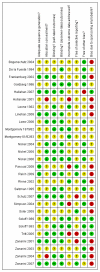

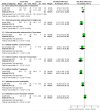
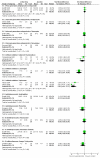

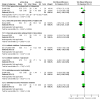
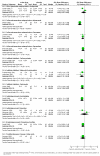
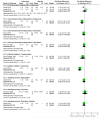


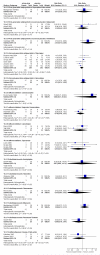

Update of
-
Pharmacological interventions for people with borderline personality disorder.Cochrane Database Syst Rev. 2006 Jan 25;(1):CD005653. doi: 10.1002/14651858.CD005653. Cochrane Database Syst Rev. 2006. Update in: Cochrane Database Syst Rev. 2010 Jun 16;(6):CD005653. doi: 10.1002/14651858.CD005653.pub2. PMID: 16437535 Updated.
References
References to studies included in this review
-
-
*
- Bogenschutz MP, Nurnberg H. Olanzapine versus placebo in the treatment of borderline personality disorder. Journal of Clinical Psychiatry. 2004;65(1):104–9. - PubMed
-
-
- Nurnberg HG, Bogenschutz MP. Atypical antipsychotic treatment of BPD: a 12-week, double-blind, placebo-control trial with olanzapine; 156th annual meeting of the American Psychiatric Association; San Francisco. 2003 May 17-22.
-
-
*
- De la Fuente JM, Lotstra F. A trial of carbamazepine in borderline personality disorder. European Neuropsychopharmacology. 1994;4:479–86. - PubMed
-
-
- De la Fuente JM, Lotstra F. Carbamazepine in borderline personality disorder. European Neuropsychopharmacology. 1993;3:350. - PubMed
-
- Frankenburg FR, Zanarini MC. Divalproex sodium treatment of women with borderline personality disorder and bipolar II disorder: a double-blind placebo-controlled pilot study. Journal of Clinical Psychiatry. 2002;63(5):442–6. - PubMed
References to studies excluded from this review
-
- Bellino S, Paradiso E, Bogetto F. Oxcarbazepine in the treatment of borderline personality disorder: a pilot study. Journal of Clinical Psychiatry. 2005;66(9):1111–5. - PubMed
-
- Bellino S, Paradiso E, Bogetto F. Efficacy and tolerability of quetiapine in the treatment of borderline personality disorder: A pilot study. Journal of Clinical Psychiatry. 2006;67(7):1042–6. - PubMed
-
- Bellino S, Zizza M, Rinaldi C, Bogetto F. Combined treatment of major depression in patients with borderline personality disorder: a comparison with pharmacotherapy. Canadian Journal of Psychiatry. 2006;51(7):453–60. - PubMed
-
- Benedetti F, Sforzini L, Colombo C, Maffei C, Smeraldi E. Low-dose clozapine in acute and continuation treatment of severe borderline personality disorder. Journal of Clinical Psychiatry. 1998;59(3):103–7. - PubMed
-
- Bohus MJ, Landwehrmeyer GB, Stiglmayr CE, Limberger MF, Bohme R, Schmahl CG. Naltrexone in the treatment of dissociative symptoms in patients with borderline personality disorder: an open-label trial. Journal of Clinical Psychiatry. 1999;60(9):598–603. - PubMed
References to ongoing studies
-
-
*
- AstraZeneca Netherlands Medical Director [accessed 28 July 2007];The effect of quetiapine on psychotic-like symptoms in borderline personality disordered patients: a randomised placebo-controlled trial. www.clinicaltrials.gov. NCT00254748.
-
-
-
*
- Bohus M. [accessed 27 July 2007];Evaluation of the efficacy of the opioid antagonist naltrexone on the incidence and intensity of flashbacks and dissociative states in patients with borderline personality disorder. www.clinicaltrials.gov/ NCT00124839.
-
-
-
*
- Casas M. [accessed 28 July 2007];Efficacy of omega-3 fatty acids on borderline personality disorder: a randomised, double blind clinical trial. www.clinicaltrials.gov/ NCT00437099.
-
-
- Goodman M. [accessed 28 July 2007];Effects of Dialectical Behavioral Therapy and escitalopram on impulsive aggression, affective instability and cognitive processing in Borderline PersonalityDisorder. www.clinicaltrials.gov/ NCT00255554.
-
- Goodman M, New AS, Koenigsberg HW, Hazlett E, Flory J, Siever L. Psychotherapy and combined treatment in BPD: possible effects; 158th Annual Meeting of the American Psychiatric Association; Atlanta, GA. 2005 May 21-26.
Additional references
-
- Akiskal HS. Demystifying borderline personality: critique of the concept and unorthodox reflections on its natural kinship with the bipolar spectrum. Acta Psychiatrica Scandinavica. 2004;110(6):401–7. - PubMed
-
- American Psychiatric Association . Diagnostic and statistical manual of mental disorders. 3rd Edition American Psychiatric Association; Washington, DC: 1980.
-
- American Psychiatric Association . Diagnostic and statistical manual of mental disorders. 4th Edition American Psychiatric Association; Washington, DC: 1994.
-
- American Psychiatric Association . Diagnostic and statistical manual of mental disorders. 4th edition. American Psychiatric Association; Washington, DC: 2000. text revision.
-
- Task force for the Handbook of Psychiatric Measures . Handbook of Psychiatric Measures. 1st Edition American Psychiatric Association; Washington (DC): 2000.
References to other published versions of this review
-
- Lieb K, Völlm B, Rücker G, Timmer A, Stoffers JM. Pharmacotherapy for borderline personality disorder: Cochrane systematic review of randomised trials. British Journal of Psychiatry. 2010;196:4–12. - PubMed
-
-
* Indicates the major publication for the study
-
Publication types
MeSH terms
Substances
LinkOut - more resources
Full Text Sources

